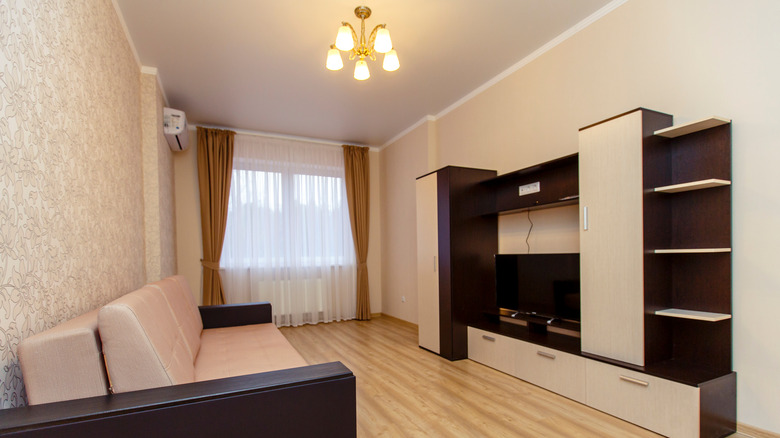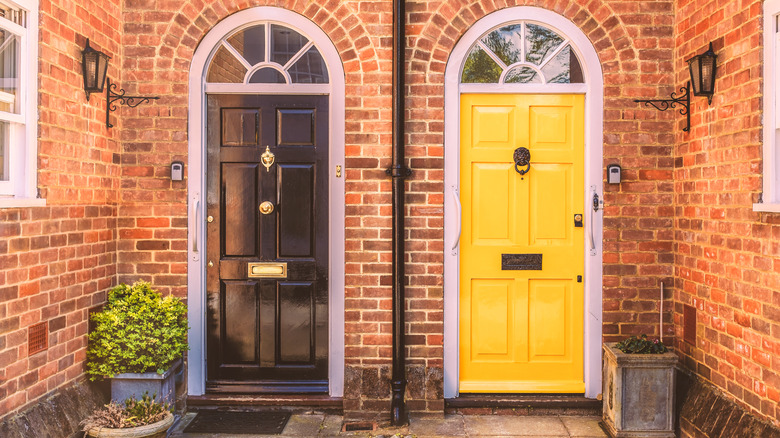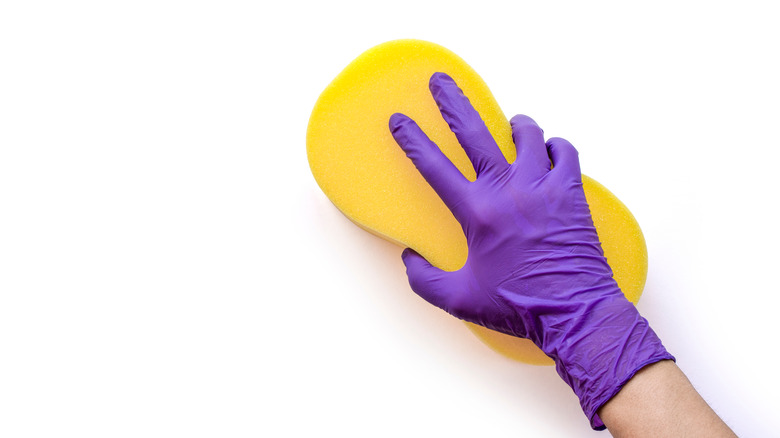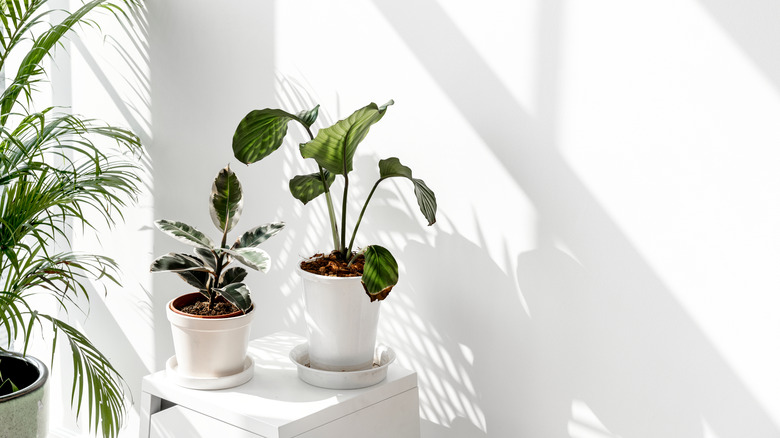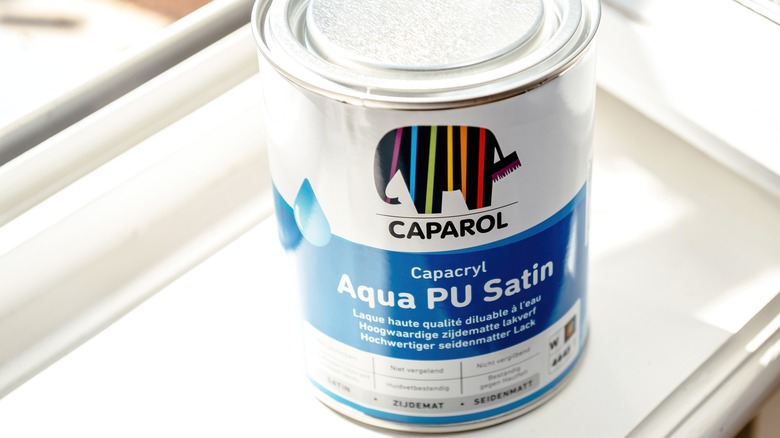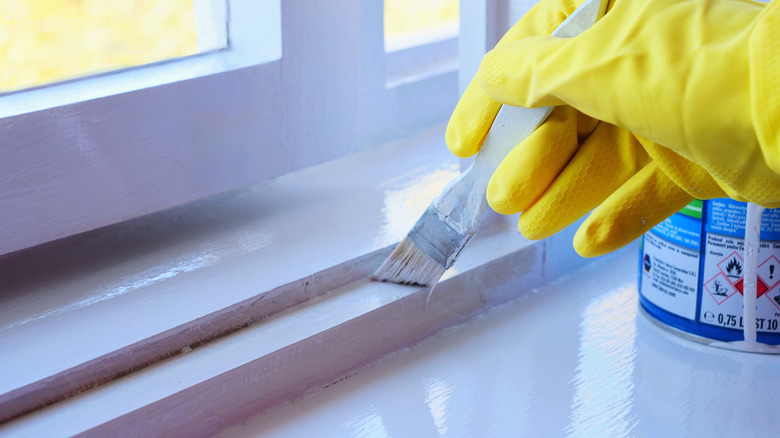What's The Difference? Satin Vs Semi-Gloss
With so many types of paint to choose from, you might wonder what's the difference between satin and semi-gloss? And most importantly, you'd want to know which is the best option for your next DIY project. After all, some paint finishes work out better for specific spaces than others. Fortunately, we've done the homework for you on the differences between satin and semi-gloss paint.
They each possess their own distinct qualities in appearance, as noted in Paint Topics. Plus, various factors (such as resistance to moisture and stains) determine which one you should utilize when painting a room or just doing some trim work. Additionally, you'll have to consider cost. Luckily there isn't much of a price difference between the two. Finally, look at the benefits and drawbacks in relation to rolling, maintenance, and cleaning. As you learn more about satin versus semi-gloss, you'll be able to determine which option to choose.
How does the appearance differ?
In regard to sheen, which refers to the degree of shine and surface performance, satin paint falls in the middle of the spectrum, according to The Spruce. Satin has a soft sheen with very little shine. At the same time, it possesses a reflective quality when light shines directly on its surface. The color differs from a flat finish because of its depth and the warmth that it offers, particularly in living areas and bedrooms.
Semi-gloss, on the other hand, has more shine. Just like its name suggests, semi-gloss radiates more of a luster. Hence, it's more reflective than a satin paint. Plus, you'll find that colors dry with a deeper, more vibrant finish. You'll discover that, for this reason, semi-gloss packs a more powerful punch when it comes to the depth of hues, making it ideal for smaller spaces or on trim.
What are the differences in cost?
Satin and semi-gloss paint finishes both offer a captivating sheen to any paint job, so which one is the more expensive choice? You might be surprised to find out that the price of one is comparable to the other, per Bob Vila. However, semi-gloss costs slightly more than satin paint. This is mostly because the glossier effect a paint has, the pricier it will be. As an example, semi-gloss paint is produced with more resins, which contribute to its shine and durability, compared to the satin paint. Thus, satin paint is your budget-worthy option.
Pros and cons of satin paint
As seen in Elle Decor, satin paint has a pearlescent sheen. The more the light is reflected, the higher the durability. For this reason, it is considered great for use in spaces such as the kids' play area or the living room. It also adds a warm look to the space since it is not overly full of moisture. If your walls are unfinished, uneven, or dimpled, satin paint hides more of those flaws than other paints. In regard to disadvantages, satin can show brush or paint roller marks. It is also not as easy to clean as gloss and semi-gloss.
Pros and cons of semi-gloss paint
Semi-gloss has a very high resistance to moisture which is mentioned in Paint Topics. Hence, it is ideal for use in areas that are exposed to dampness like washrooms, the kitchen, and the laundry room. It is a highly durable paint for areas that are at risk for wear and tear, and it's relatively easy to clean. In a white and off-white, semi-gloss offers a brighter appearance than other paints. Because it is durable and water-resistant, it is the best option for trims that are exposed to the outdoor elements like window sills and garage doors. However, semi-gloss paint will reveal imperfections on whatever surface it is painted on. Plus, like satin paint, it shows every brush or roll if you're not careful with the application process.
DIY rolling difficulty of satin vs semi-gloss
According to House Grail, both satin and semi-gloss paints pose a challenge in application as opposed to a flat or matte finish. However, neither option requires professional expertise and can be used in DIY projects. Satin rolls out easily when you stay with a straight, vertical motion. Any other direction results in streaks. You'll find that a sprayer or an electric-powered roller works more efficiently. Semi-gloss paint is also easier to apply using an electric roller or sprayer. Manual application, either by brush or roller, proves to be difficult with shinier paints like this one. With both satin and semi-gloss paints, be careful to avoid flashing (the paint looking heavier in certain areas) by completing the entire wall from corner to corner.
Durability and maintenance
Regarding durability and maintenance, Paint Topics points out that semi-gloss comes out ahead in both categories. With its smooth texture, semi-gloss stands up to moisture and spray cleaners without absorbing wetness and peeling. In fact, semi-gloss tends to be the easier option to keep clean. Basically, a smooth surface means that marks and stains can be wiped away quickly and easily. Both semi-gloss and satin are easier to clean and maintain than matte or eggshell finishes. However, satin stands up to dents and dings more than semi-gloss paint. When these imperfections occur, they're less noticeable on a satin finish. Unfortunately, they stand out on a semi-gloss surface.
When to choose satin over semi-gloss paint
For most rooms in your house that receive a lot of natural light, satin is the prime selection per House Logic. With a satin finish, you'll get the sheen without the glare and a smooth surface. Because the satin finish does not reflect as much light as a semi-gloss, it hides wall imperfections. Satin finish paint offers a more accurate color tone than semi-gloss since it reflects less light. In other words, once it dries, you can count on an almost-exact match to the paint chip that you chose at the home-improvement store. Furthermore, you'll pay a few cents less per gallon than you would semi-gloss.
Recommended use of satin paint
Satin has a gleaming sheen that is ideal for reflecting light without a glare. It is also relatively easy to clean and maintain without worrying about the paint coming off, as noted by Elle Decor. For the most part, satin can also be applied to walls that might have some imperfections, such as divots, patched areas, and cracks. However, you should still prepare them by making them as smooth as possible. Satin paint also provides an excellent choice for rooms that are frequently inhabited. The paint is suitable for use in areas such as family rooms, living rooms, children's rooms, hallways, and dining rooms.
Recommended use of semi-gloss
Semi-gloss paint is ideal for rooms where moisture, drips, and grease stains are common, such as in the kitchen or bathroom as mentioned in the blog for Maya's Painting. Because of its high level of sheen, it is a durable paint that can be easily scrubbed clean of any imperfections, making it an excellent choice for children's bedrooms and playrooms. It's also a popular finish for home trimmings like mantels, stair railings, cabinetry, and crown molding because the sheen makes these architectural elements stand out. When trying to make a dark space appear brighter, this finish also works well with a light color.

